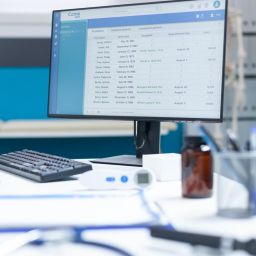
When Every Second Counts, Health Cluster Connects the Dots Faster
In critical care units, timing is everything. A few minutes of delay in receiving lab results can drastically change a patient’s outcome. Doctors and nurses need clear, real-time data to take immediate action — whether it’s adjusting medication, ordering further tests, or making life-saving decisions on the spot.
That’s why real-time lab integration is no longer a luxury — it’s a necessity. And Health Cluster is at the forefront of making it simpler, faster, and more accurate through its advanced LIS (Laboratory Information System) integrations.
1. From Lab Delays to Instant Results
In many hospitals, lab systems and clinical records still operate separately. Results are printed, scanned, or manually entered — often leading to delays and errors.
Health Cluster eliminates the lag. With LIS fully integrated into the hospital’s EMR and critical systems, lab results are automatically shared in real-time; no calls, no paperwork, no waiting.
Key Advantage: The moment a lab result is validated, it’s instantly visible to ICU teams and doctors enabling faster, evidence-based interventions.
2. Real-Time Visibility for High-Risk Situations
In the ICU or ER, conditions can change by the minute. Patients may deteriorate quickly, and decisions need to happen on the fly.
Health Cluster’s LIS integration keeps clinicians one step ahead by providing:
- Real-time updates on blood work, cultures, and diagnostics
- Alerts for abnormal or critical values
- Dashboards showing turnaround times and lab status
- Auto-routing of urgent results to the right care team
What this means: Fewer delays. Fewer errors. Faster interventions when it matters most.
3. A Unified View That Reduces Confusion
When lab data is spread across emails, folders, or unlinked systems, it creates noise. Clinicians waste valuable time tracking information, risking missed signs or redundant testing.
Health Cluster brings everything to one place — integrating LIS results into a single, simplified view alongside patient vitals, imaging, and history.
What you get:
- One-click access to full patient profiles
- Timeline view of labs, symptoms, and actions
- Automatic syncing across care teams
This clarity leads to quicker decisions and better collaboration.
4. Smarter Labs, Smarter Decisions
Health Cluster goes beyond just connecting systems — it empowers them with smart features:
- Trend tracking for lab values over time
- Auto-flagging for deteriorating conditions
- Predictive alerts based on lab result patterns
- Role-based notifications for lab-specific thresholds
The impact: ICU teams and emergency doctors stay informed, not overwhelmed. And hospitals move from reactive care to proactive intervention.
5. Built for Clinical Speed, Not IT Complexity
Tech should serve healthcare — not the other way around. Health Cluster’s LIS integrations are built for ease and agility, with:
- Plug-and-play compatibility with major EMRs and HIS
- Minimal training required for use
- Mobile-friendly results access
- Auto-updates and error logging for lab records
This means your hospital doesn’t have to overhaul its systems — just optimize them.
For a broader look at how AI and smart systems like LIS are reshaping care in 2025, explore our blog “From Hype to Healing: How AI Is Actually Transforming Healthcare in 2025“
Final Thoughts
In emergency medicine, lab results are more than just numbers — they’re lifelines. By integrating LIS into real-time, clinician-friendly systems, Health Cluster ensures no patient has to wait for the care they need.
If your hospital is still depending on printed reports and manual follow-ups, it’s time to upgrade to a smarter, faster future.
With Health Cluster, your lab results move as fast as your team — and that can make all the difference.















